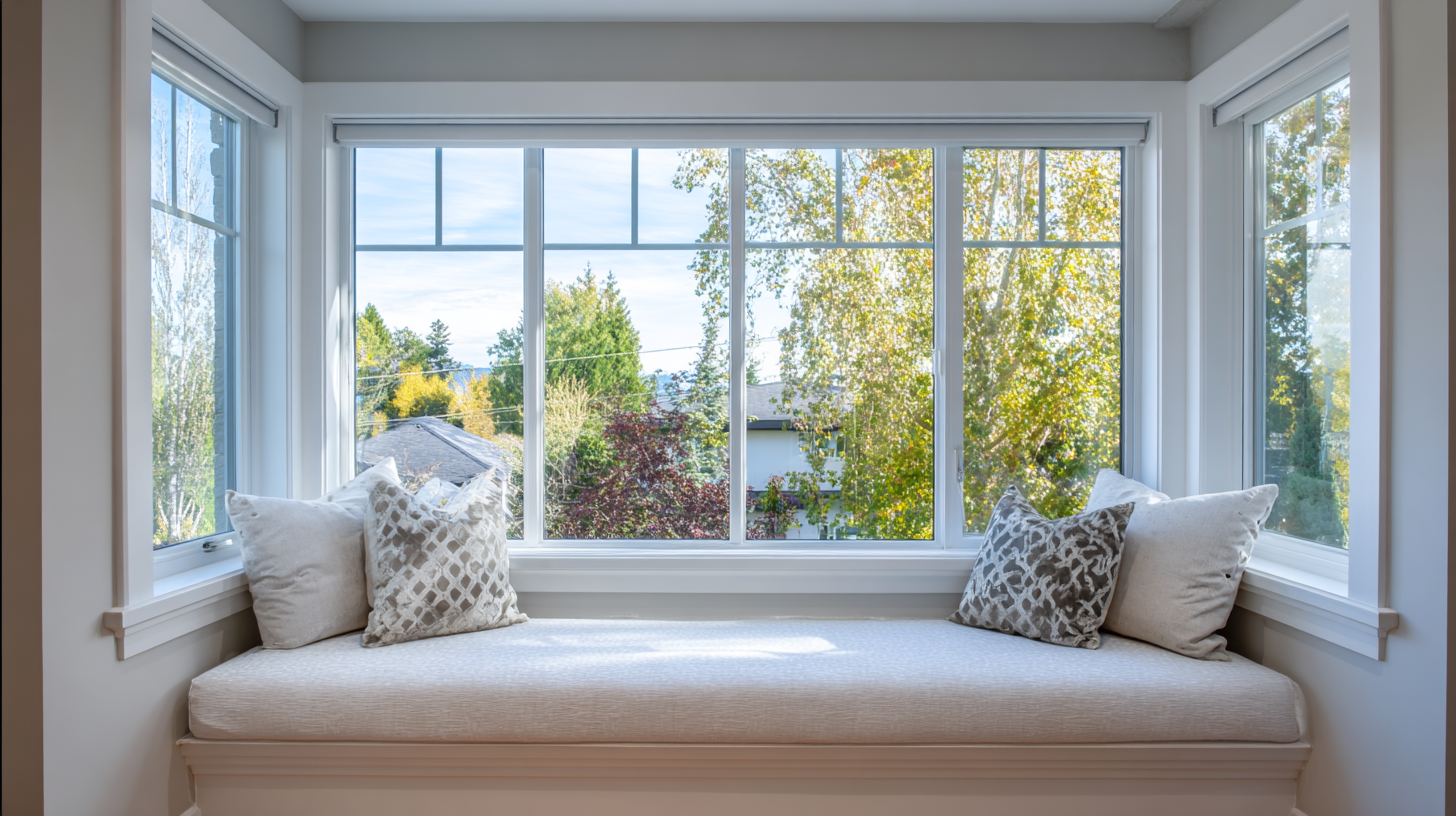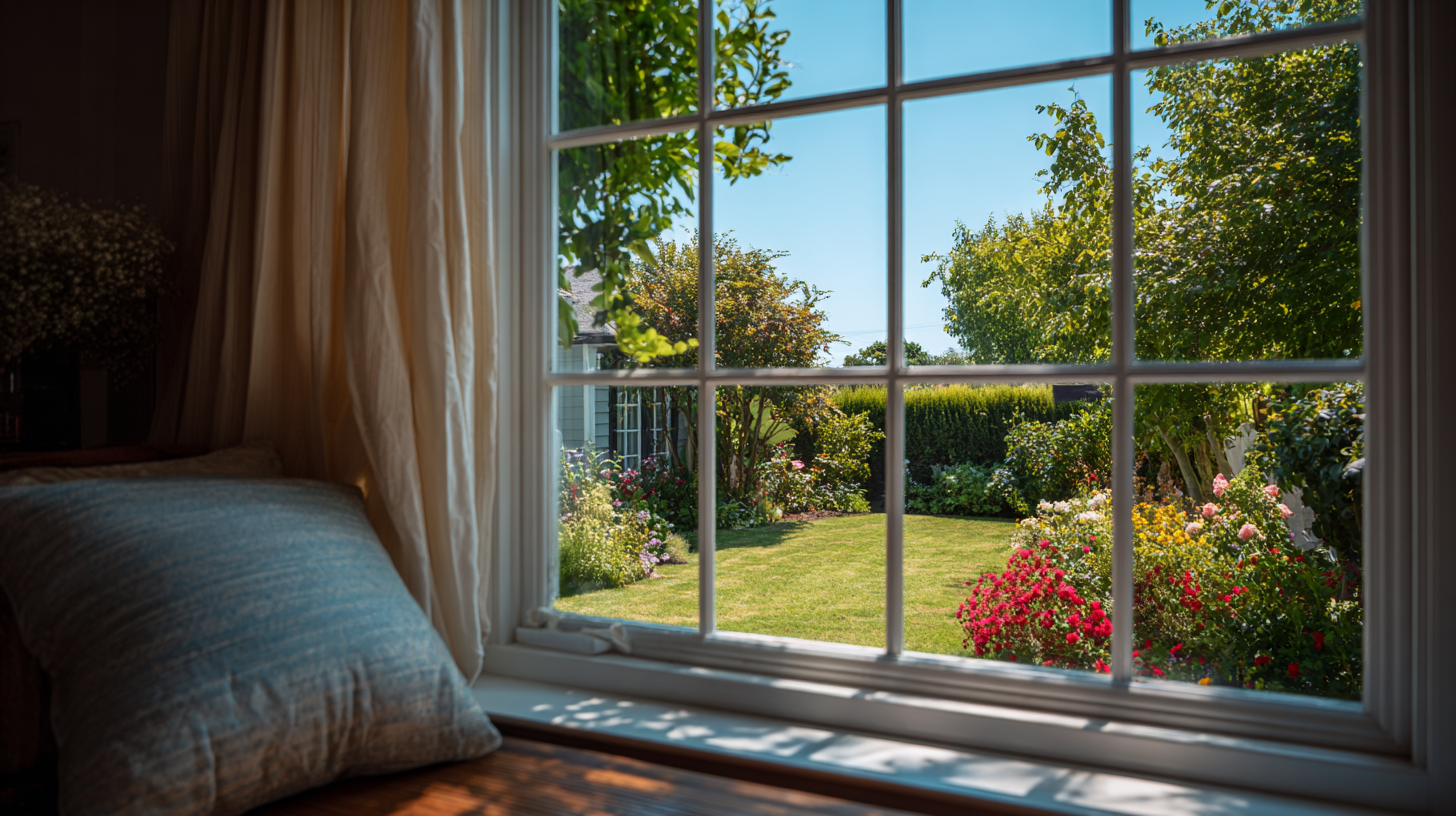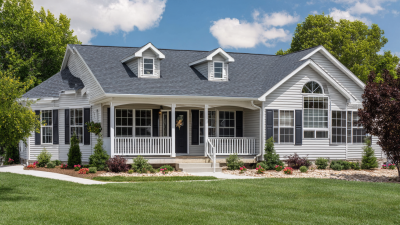Unlocking Efficiency: What Value Windows Mean for Your Home Energy Savings
In the quest for energy efficiency, homeowners are increasingly turning to advanced solutions that promise both comfort and savings. One such innovation is the concept of "value windows," which goes beyond traditional window features to enhance overall home energy performance. Industry expert Dr. Emily Carson, a leading authority on energy-efficient building materials, has stated, "Value windows not only improve insulation but also increase the aesthetic appeal and resale value of a home." This underscores the multifaceted advantages that come with investing in high-performance windows.
As energy costs continue to rise, the importance of optimizing our living spaces becomes ever more critical. Value windows are designed to minimize energy loss, keeping homes warmer in winter and cooler in summer, which translates to significant savings on heating and cooling bills. Furthermore, these windows contribute to a more sustainable living environment—reducing the carbon footprint of homeowners while enhancing comfort levels.
In this article, we will delve deeper into what defines value windows, explore their benefits, and examine how they represent a smart investment for the future of your home. With insights from industry professionals and case studies illustrating their advantages, we aim to provide a comprehensive understanding of how value windows can unlock efficiency and drive savings for homeowners everywhere.

Understanding the Importance of Value Windows in Home Energy Efficiency
Value windows play a critical role in enhancing home energy efficiency, serving as both a functional and strategic investment. According to a recent analysis, homeowners can save an average of 12% on their energy bills through the installation of energy-efficient windows. As we enter 2024, the emphasis on energy-efficient home renovations is not solely an environmentally conscious decision; it’s emerging as a savvy financial strategy. With rising energy costs, the long-term savings on utility bills can significantly offset the initial investment.
In addition to direct savings, energy-efficient windows contribute to overall home comfort and climate control. They help maintain a stable indoor temperature by minimizing heat exchange, ensuring homes stay cooler in summer and warmer in winter. This capability can lead to reduced reliance on heating and cooling systems, further lowering energy expenses. As homeowners seek ways to enhance their properties, integrating value windows can be viewed as a dual-purpose upgrade—improving energy savings while potentially increasing the overall market value of residential real estate. This trend reflects a growing awareness of sustainability as a key value driver in property investments.
Unlocking Efficiency: What Value Windows Mean for Your Home Energy Savings
| Window Type | U-Value (W/m²K) | Solar Heat Gain Coefficient (SHGC) | Energy Savings ($/year) | Lifespan (years) |
|---|---|---|---|---|
| Single Pane | 5.0 | 0.80 | $100 | 20 |
| Double Pane | 2.0 | 0.60 | $300 | 25 |
| Triple Pane | 0.9 | 0.50 | $500 | 30 |
| Low-E Glass | 1.3 | 0.30 | $400 | 25 |
| Triple Glazed Low-E | 0.7 | 0.25 | $600 | 35 |
Types of Value Windows: What Homeowners Need to Know
When considering energy efficiency in your home, one of the key features to evaluate is the type of value windows you install. These windows not only contribute to aesthetic appeal but also play a crucial role in maintaining a comfortable indoor environment while reducing energy costs. Homeowners should be aware of the various types of value windows, such as double-glazed, triple-glazed, and low-E coatings, each offering distinct benefits. Double-glazed windows, for example, provide excellent insulation by trapping a layer of air between two panes, significantly lowering heat transfer.
In addition to glazing options, the framing material is also vital. Vinyl, wood, and fiberglass frames each have unique properties that affect energy efficiency and maintenance. Vinyl frames are known for their durability and low maintenance, while wood offers natural insulation and can be aesthetically pleasing, but requires more upkeep. Understanding these factors allows homeowners to make informed decisions that improve energy efficiency, enhance comfort, and potentially increase the value of their property. Ultimately, investing in the right type of value windows is an important step towards realizing significant energy savings in your home.
Calculating Potential Energy Savings with Value Windows
When considering home energy savings, value windows play a crucial role in enhancing efficiency. These windows are designed to provide better insulation, reducing the amount of energy required to heat or cool your home. By decreasing heat loss during winter and minimizing heat gain during summer, value windows create a more stable indoor environment, which translates into lower utility bills.

Calculating potential energy savings from value windows involves several factors including the U-factor, solar heat gain coefficient, and local climate conditions. For instance, by replacing single-pane windows with double or triple-pane options, homeowners can significantly decrease energy consumption. Depending on the number of windows and the overall size of the home, energy savings can range from 20% to 50%. Furthermore, many regions offer incentives for homeowners who invest in energy-efficient windows, which can further enhance the financial benefits of making this upgrade. By understanding and analyzing these factors, homeowners can unlock substantial energy savings while contributing to a more sustainable future.
Installation and Maintenance Tips for Maximizing Window Efficiency
When it comes to maximizing window efficiency, proper installation and maintenance are crucial. According to the U.S. Department of Energy, energy-efficient windows can save homeowners between $126 to $465 a year on energy costs, depending on the house's location and climate. To ensure your windows are performing at their best, start with a thorough inspection. Regularly check for any air leaks or condensation between panes, as even minor issues can lead to significant energy losses over time. Consider hiring professionals to seal or repair windows as needed; this proactive approach can extend the lifespan of your windows while ensuring optimal thermal performance.

Additionally, maintenance techniques such as keeping frames clean and lubricating moving parts can enhance functionality. A recent study highlights that using advanced technology, such as smart sensors and mobile connectivity, can further optimize energy savings by monitoring environmental conditions and adjusting indoor settings accordingly. Homeowners should also evaluate their window treatments; strategic use of curtains or blinds can effectively regulate indoor temperatures, contributing to an even greater efficiency. By integrating these practices, you can significantly impact your home’s overall energy savings.
Exploring Incentives and Rebates for Upgrading to Value Windows
Upgrading to value windows not only enhances your home's energy efficiency but can also lead to substantial financial savings through various incentives and rebates. Many local and federal programs are designed to encourage homeowners to invest in energy-efficient improvements. These incentives can significantly offset the initial costs of window replacement, making it an economically viable choice. Homeowners should research what programs are available in their area, as these can vary widely by location.
**Tip:** Check your state's energy department website for listings of available rebates. Some utility companies also offer cash incentives for homeowners who upgrade to energy-efficient windows, so it's worth inquiring about your provider's offerings.
In addition to rebates, tax credits may be available for energy-efficient home improvements. These credits can provide a significant return on your investment when filing your taxes. By ensuring your new windows meet specific energy standards, you might qualify for lucrative tax breaks that further reduce your overall costs.
**Tip:** Keep all purchase and installation receipts for your records. You’ll need these during tax season to claim your credits successfully. Engaging with local contractors who are familiar with these programs can also streamline the process and ensure you maximize your savings.
Energy Savings from Upgrading to Value Windows
This chart illustrates the average annual energy savings achieved by upgrading to value windows in different home styles. The data reflects potential savings in USD based on energy efficiency improvements.
Related Posts
-

Top 10 Value Windows: Affordable Solutions for Energy Efficiency and Home Comfort
-

Exploring the Best Energy Efficient Windows and Doors for Your Home Makeover
-

Exploring the Efficiency of Value Windows: How Energy Savings Can Reduce Your Bills by Up to 30%
-

Unlocking the Secrets of Home Design with the Window Store
-

Exploring the Impact of Window Places on Indoor Air Quality: A Comprehensive Review
-

Top 5 Benefits of Aluminum Storm Windows That Will Enhance Your Home Efficiency and Value
Our Location
476 Main Street - Route 28
Dennisport, MA 02639
Business Hours -
- Mon - Fri
- -
- Saturday
- -
- Sunday
- Closed

Share On: